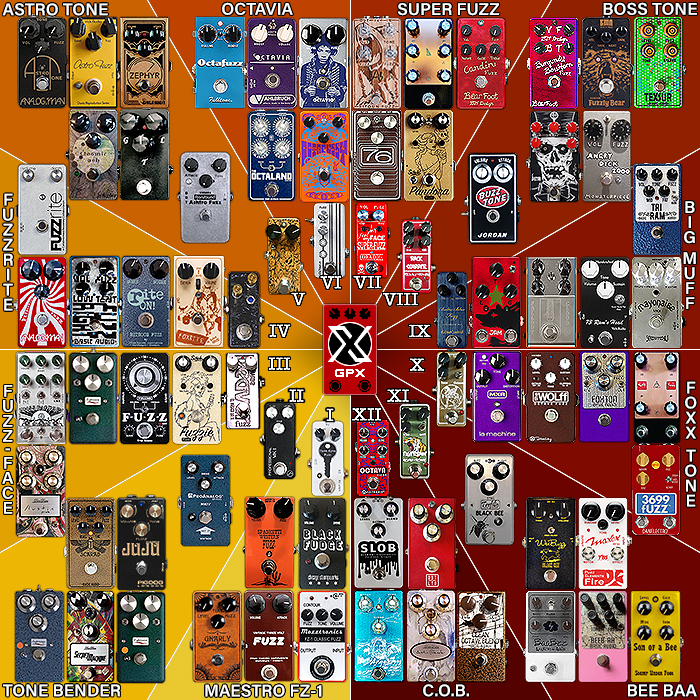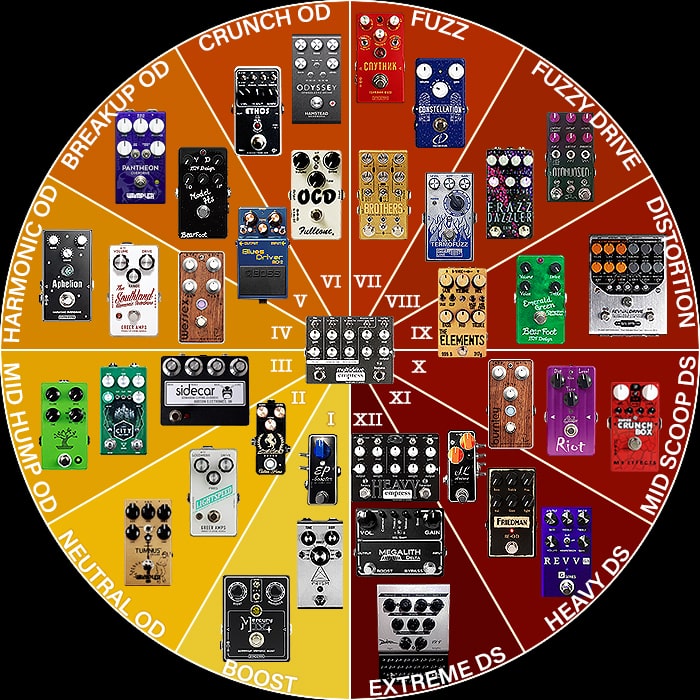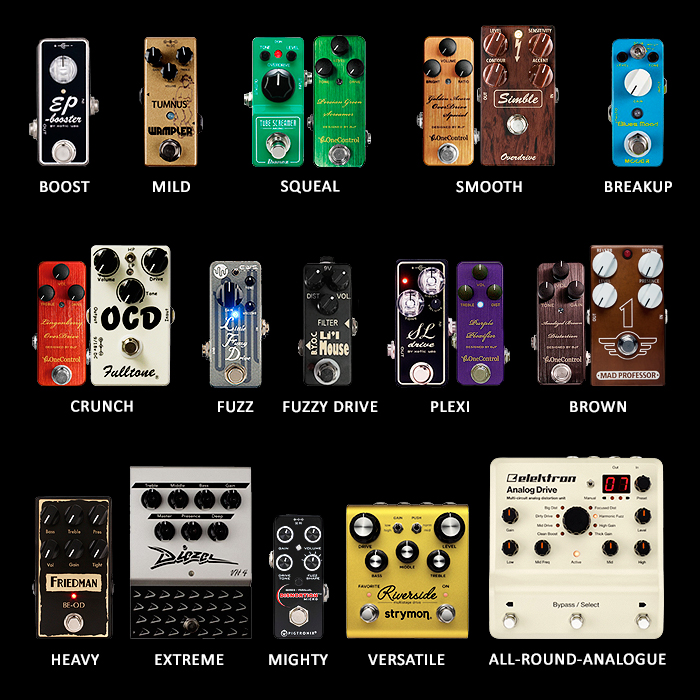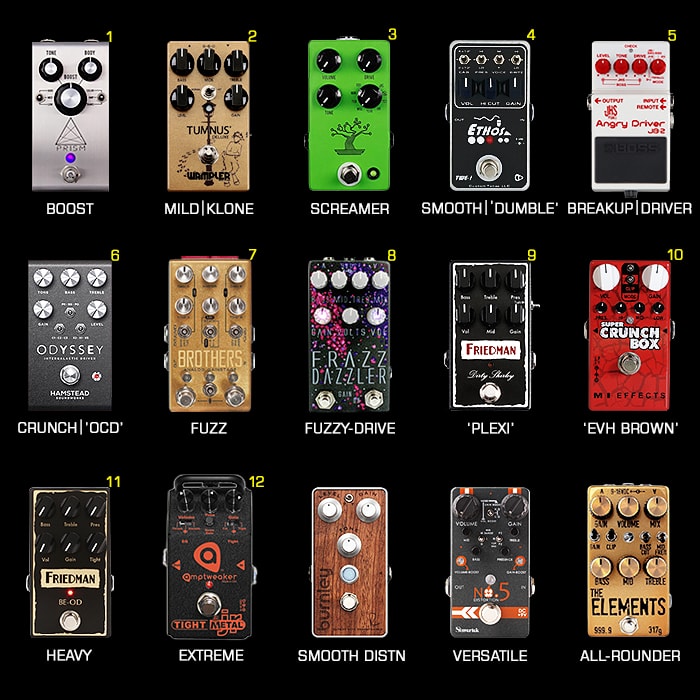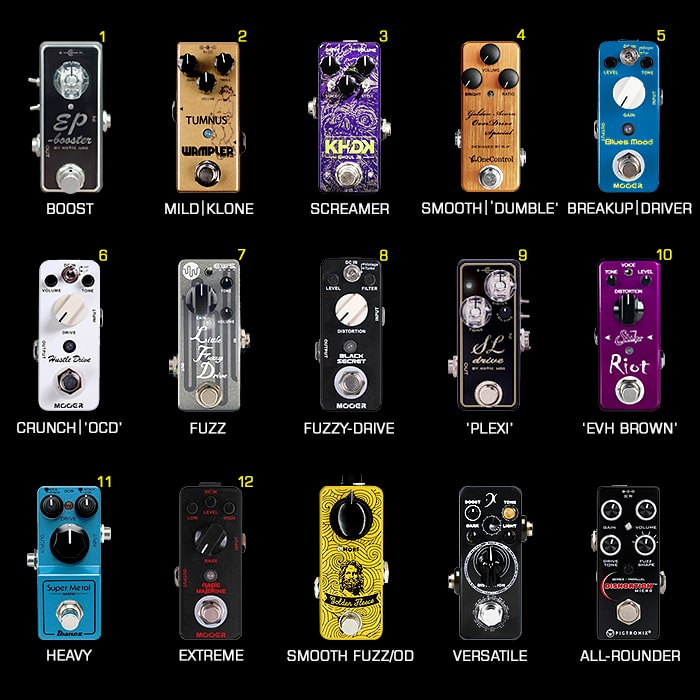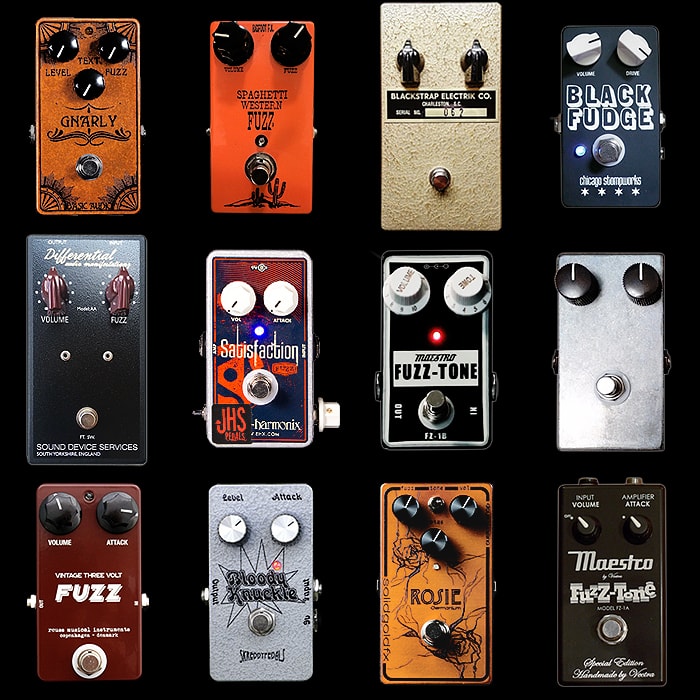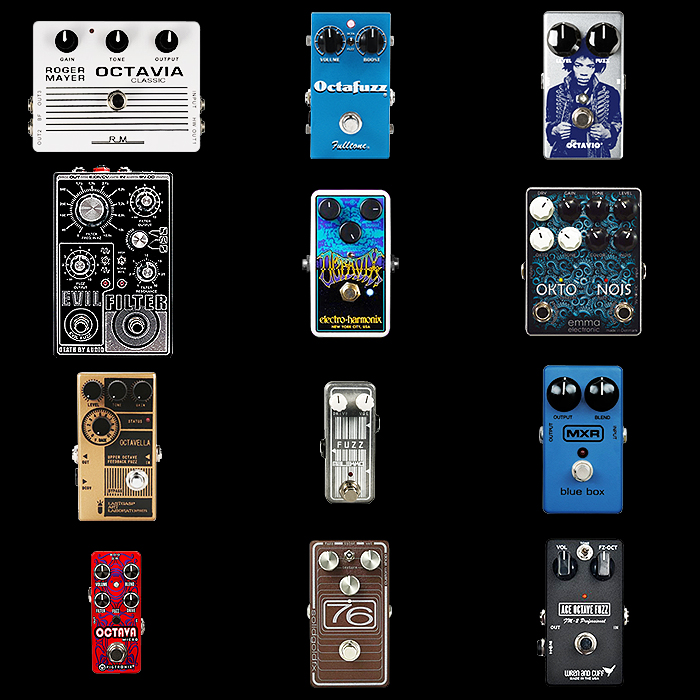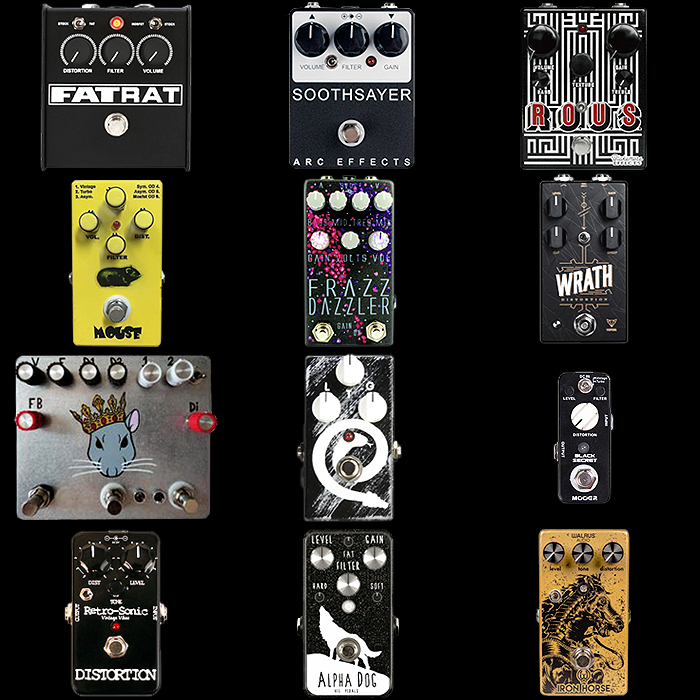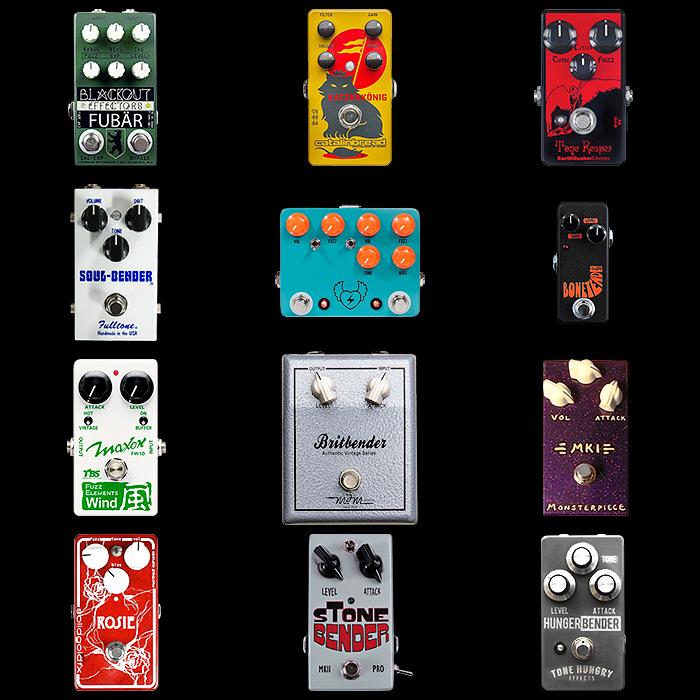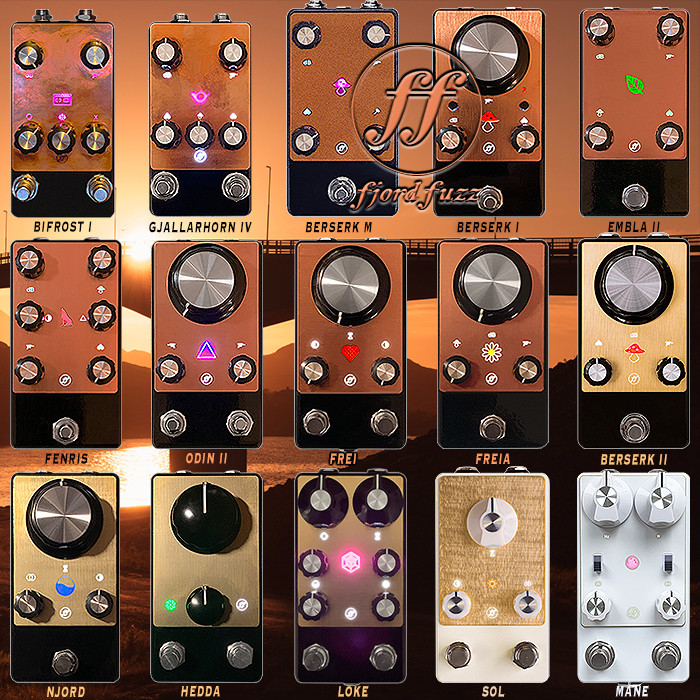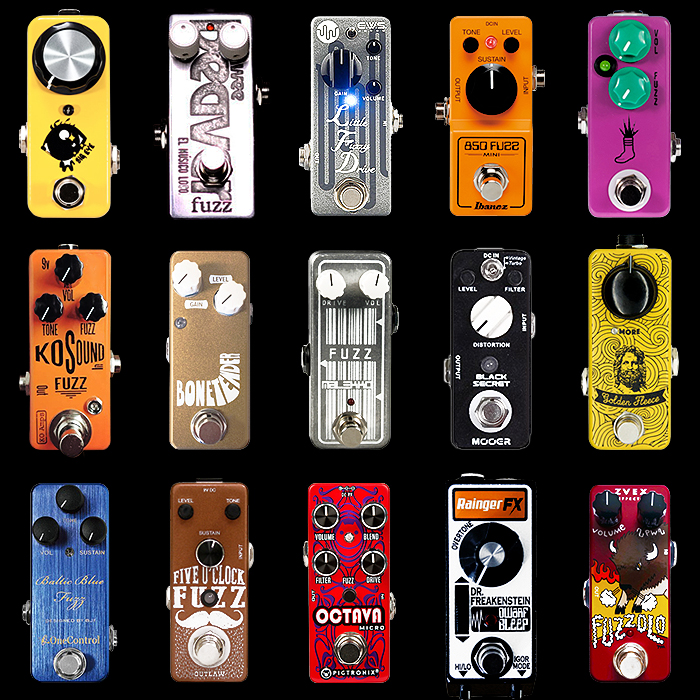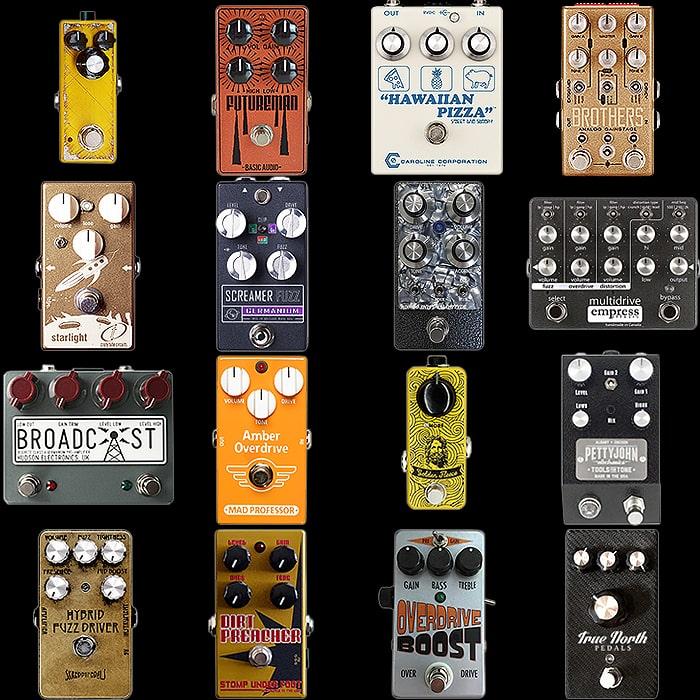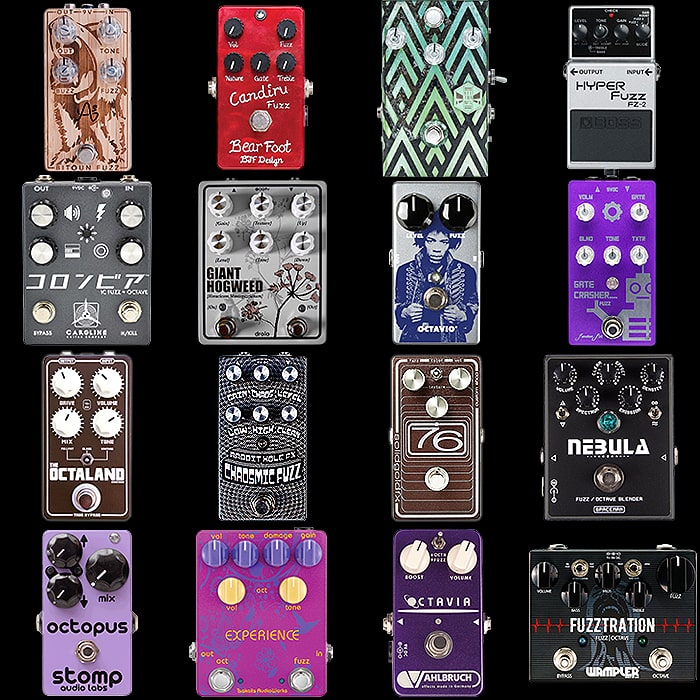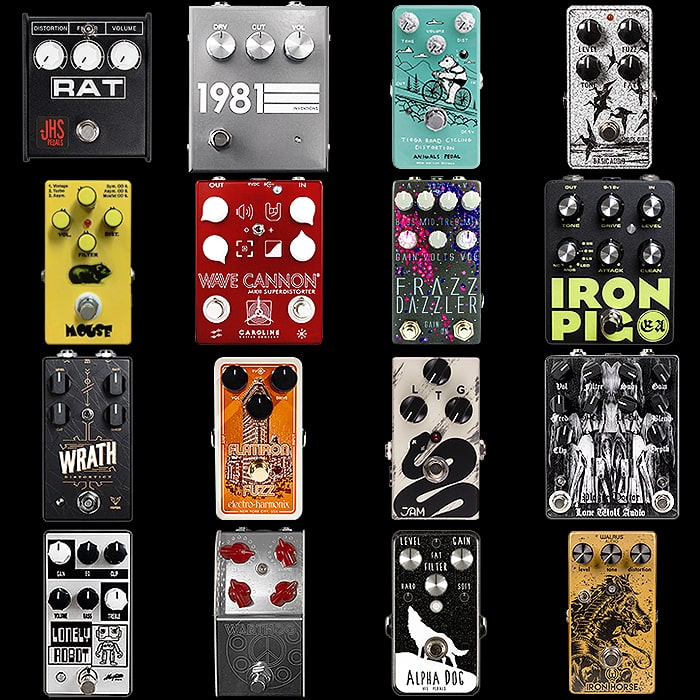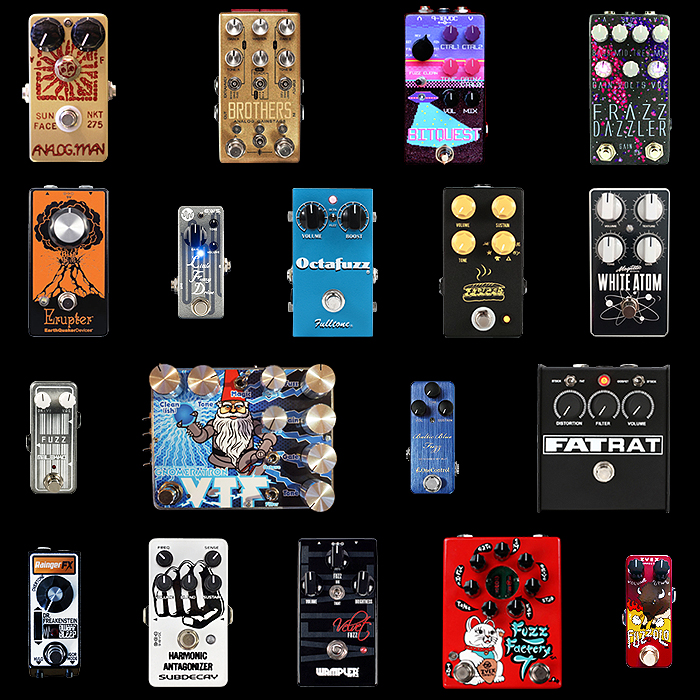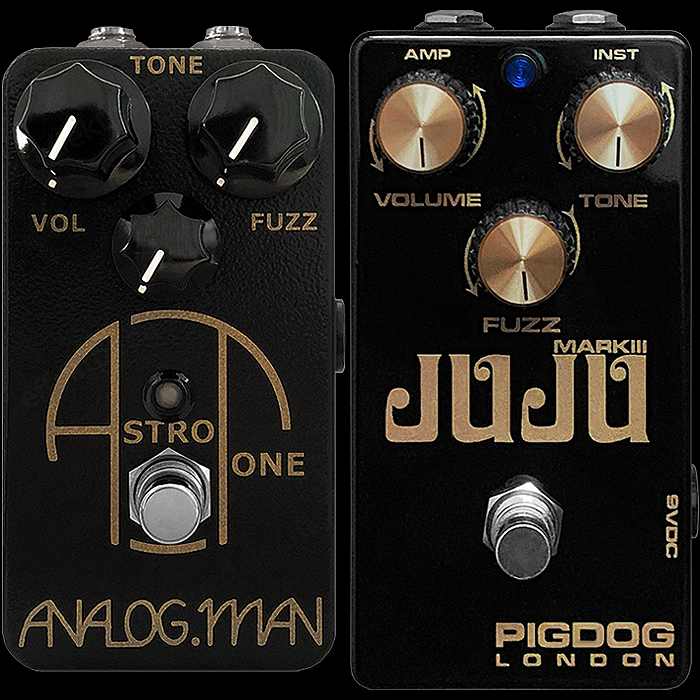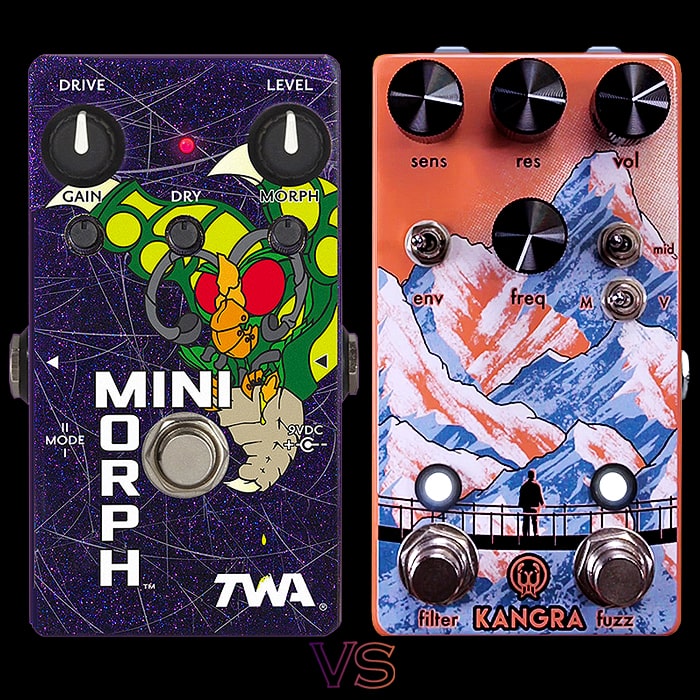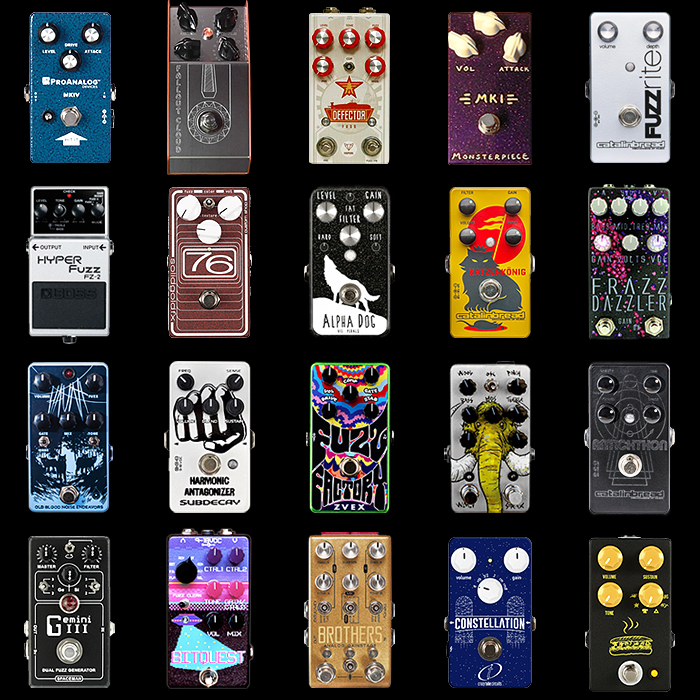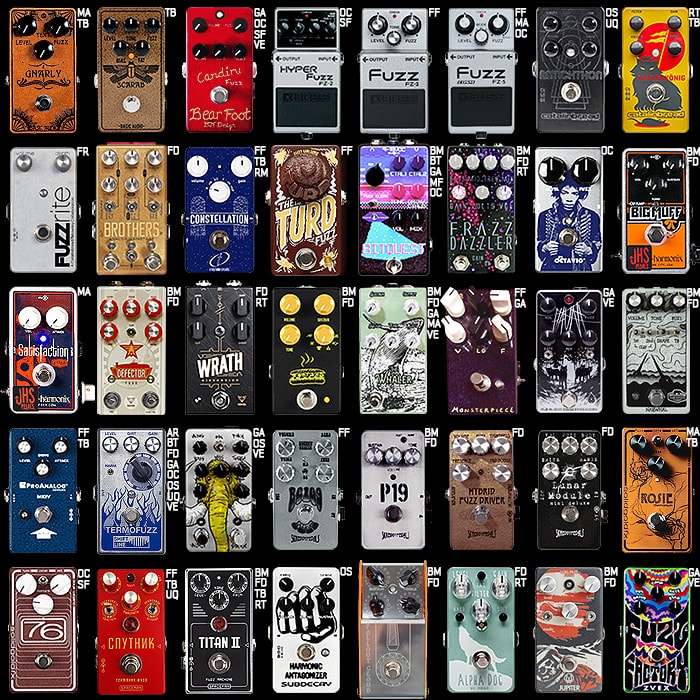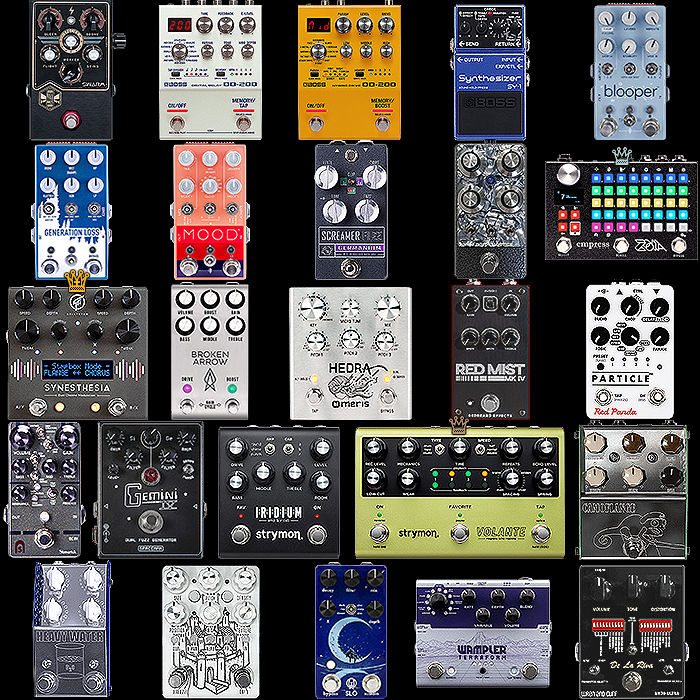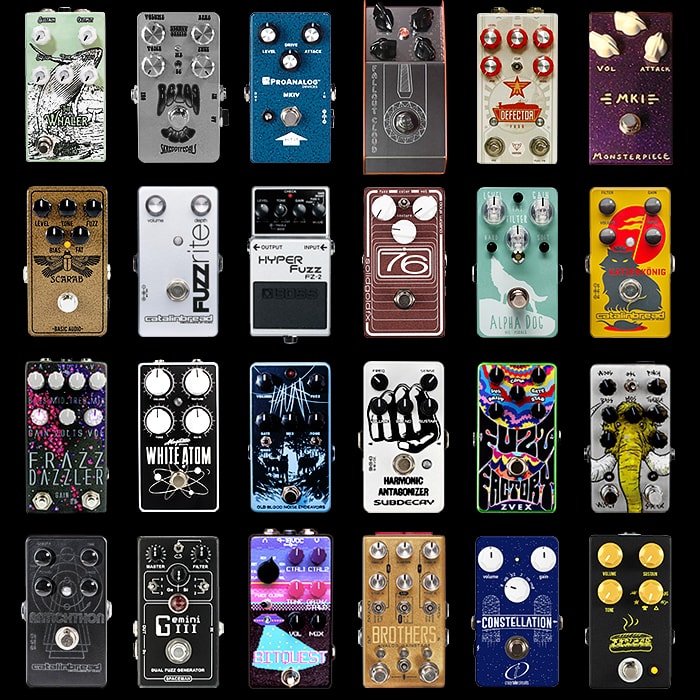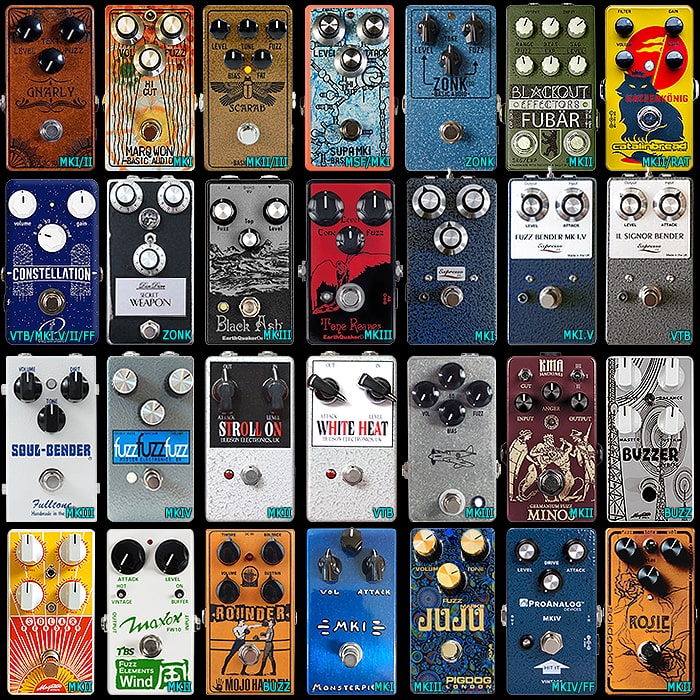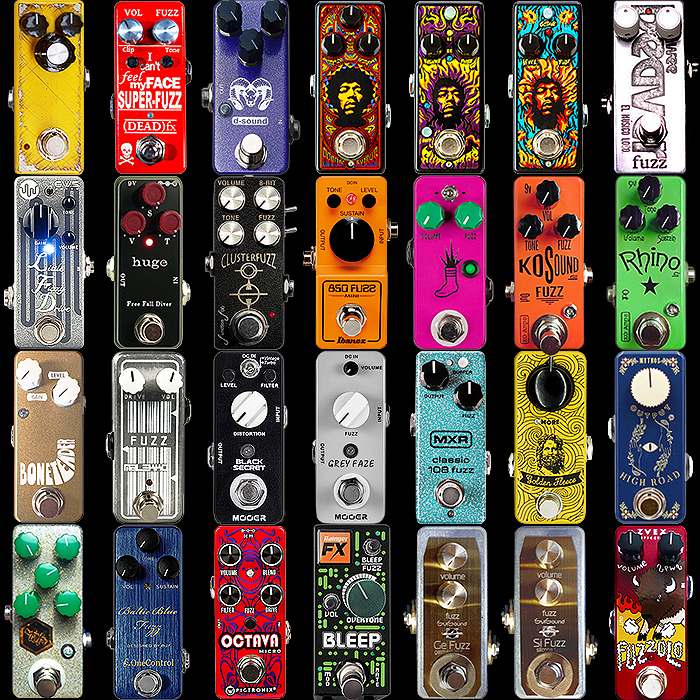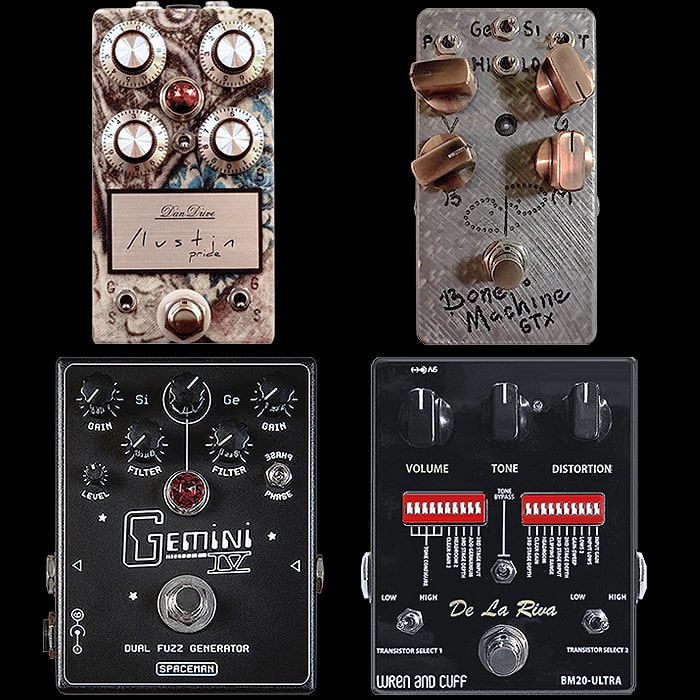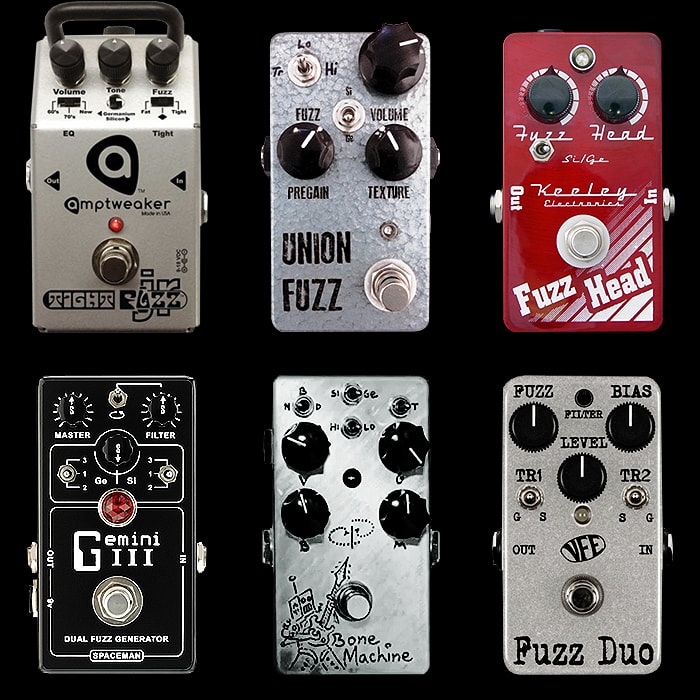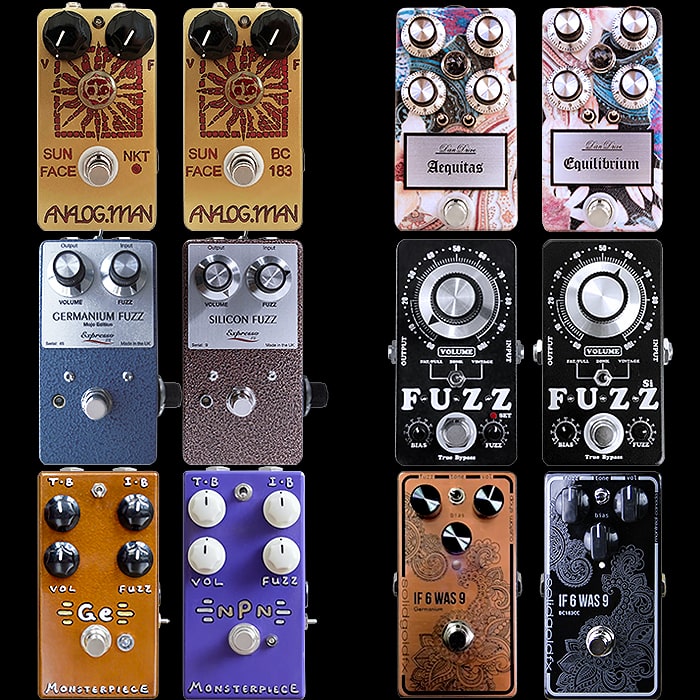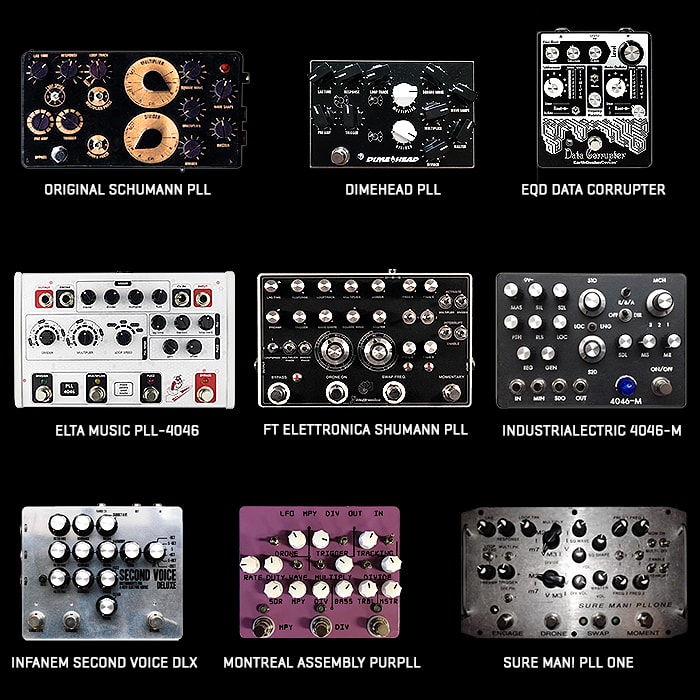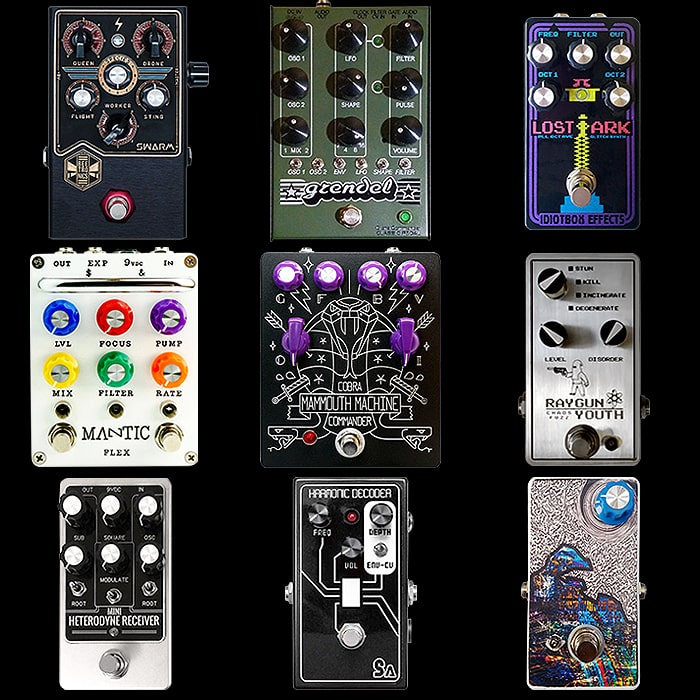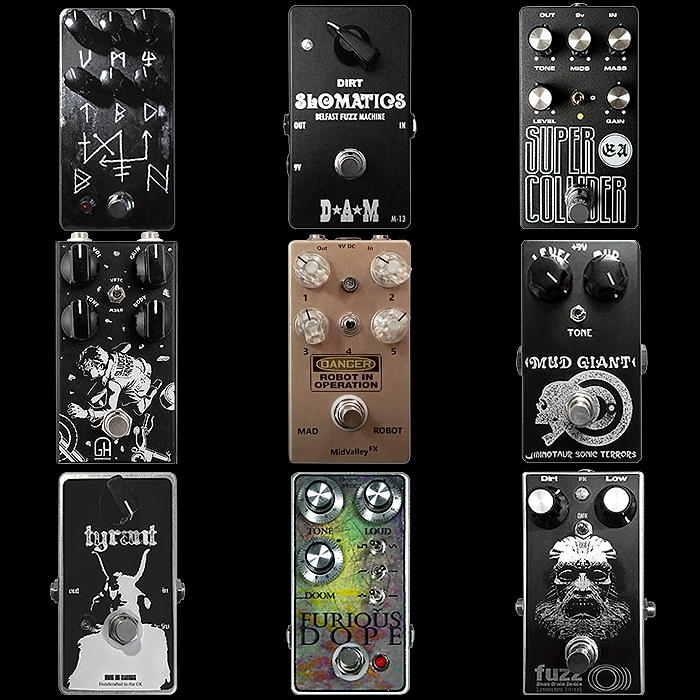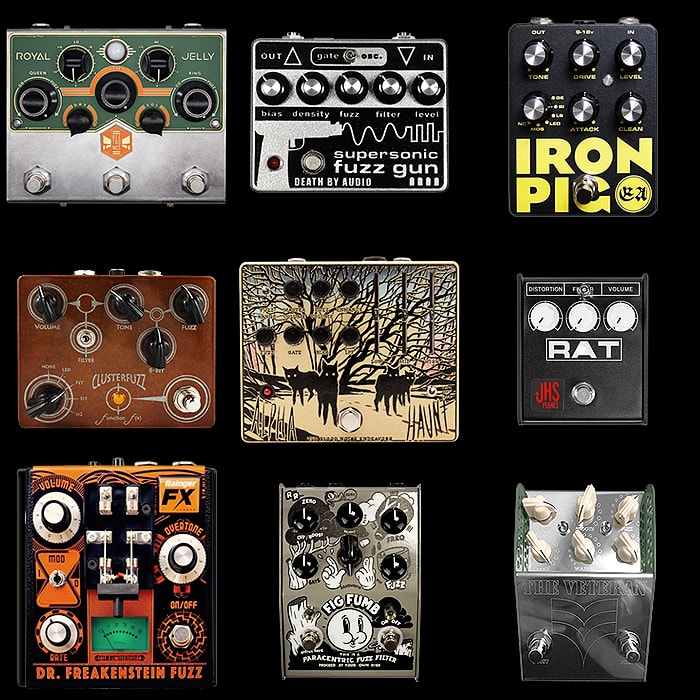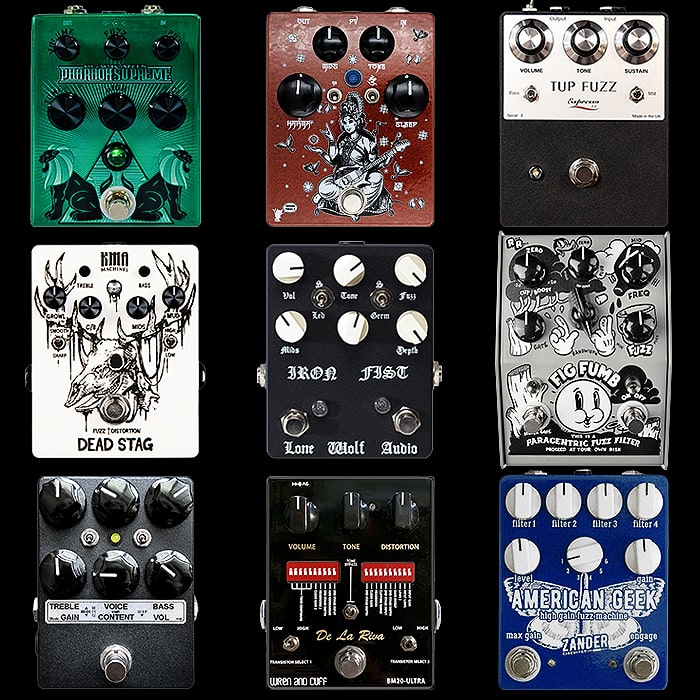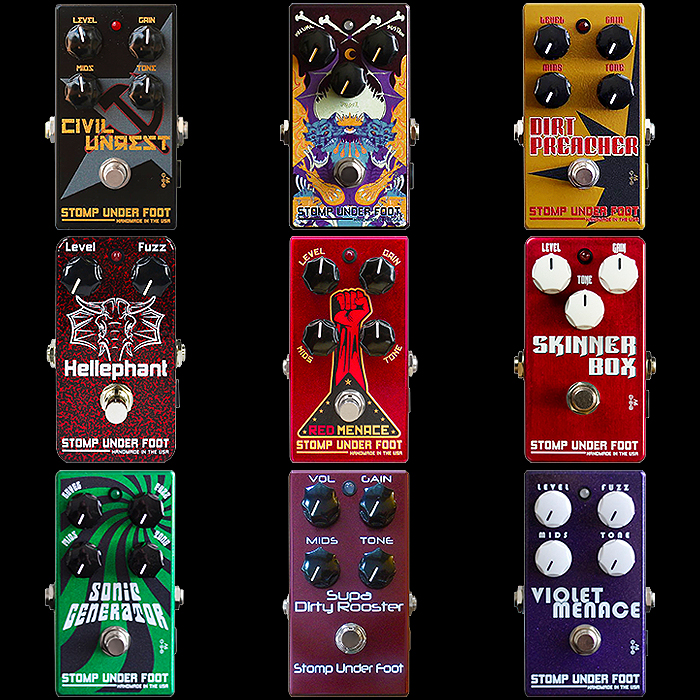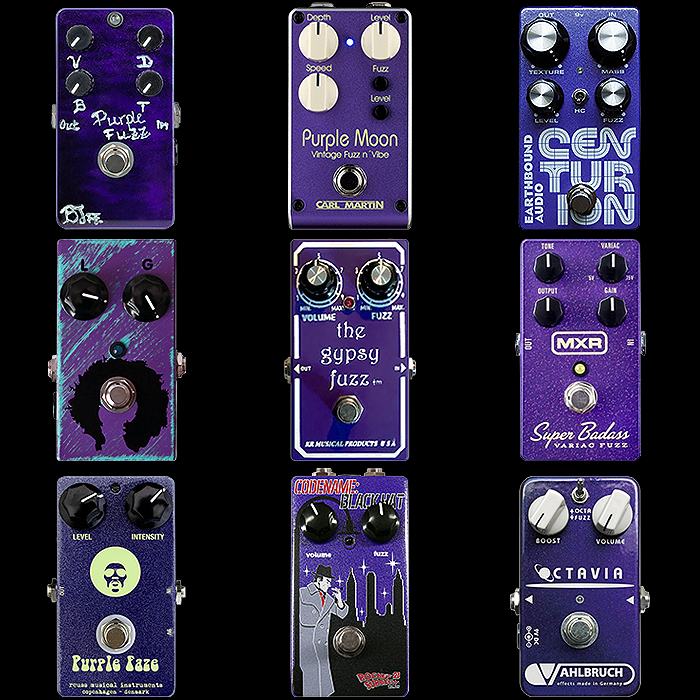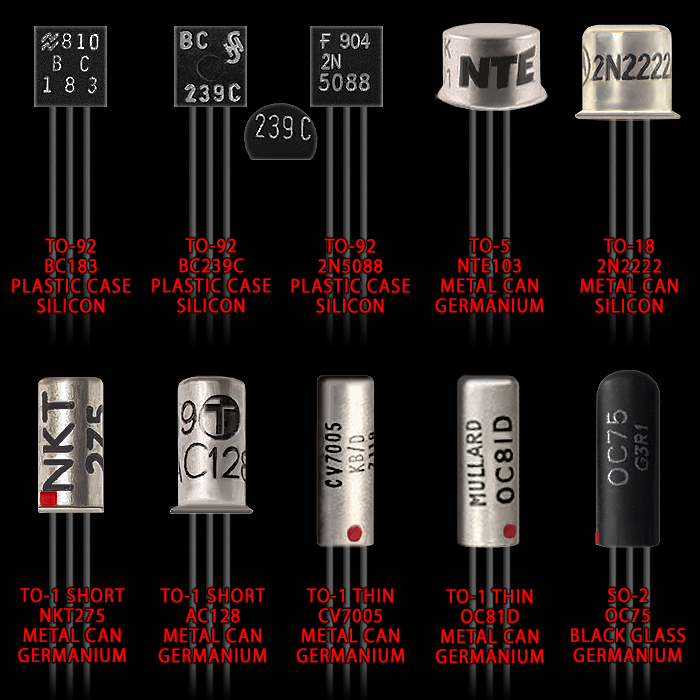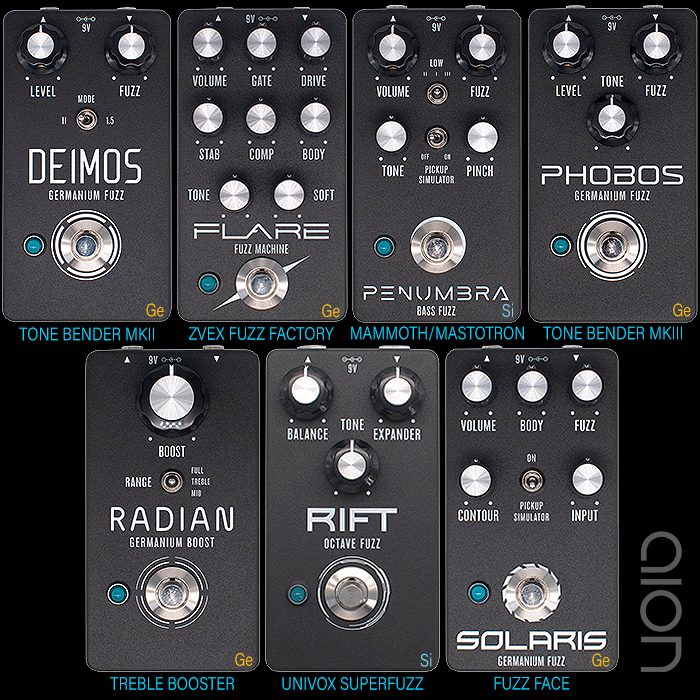Fjord Fuzz - Daniel Thornhill's Cutting Edge Futuristic Fuzz Pedals from the West Coast of Norway

As with many pedal builders, the roots of Daniel’s Fjord Fuzz are firmly embedded in a particular music scene. In this instance Bergen on Norway’s West Coast - one of the 4 main corners of Norway’s creative arts - alongside Oslo, Stavanger and Tromsø, and famously home to a number of internationally celebrated artists including Annie, Erlend Øye / King’s of Convenience (sic) / Whitest Boy Alive, Datarock, Kygo, and Ralph Myerz / and the Jack Herren Band. While more recently there has been a smattering of more indie-centric guitar-based bands rising in prominence - like Fjord Fuzz Artists Chain Wallet.
For me DJ Tore Andreas Kroknes, AKA Erot, put Bergen firmly on the map back in 2000 with his Tellé imprint compilation - which introduced me to the delights of the aforementioned Annie, Bjørn Torske, King’s of Convenience, Ralph Myerz, and my long-term favourites Röyksopp - albeit Bjørn and Röyksopp obviously hail from Tromsø in the far north!
Daniel himself has been firmly entrenched in that scene for over a decade now, having been one of the Venue Managers of the Landmark - the musical annexe of the main Bergen Kunsthall or Art Gallery / Exhibition Centre. In managing that concert space Daniel came into contact with numerous bands, including Dungen and Unknown Mortal Orchestra - which are still to this day 2 of the most significant collaborative Fjord Fuzz Artists / Endorsers.
Daniel has his own band ’Junk Machine’ who last released ’Woman’ in 2017, and the album ’Inner Child Labour’ one year earlier in 2016 - they are currently working on new material. Bands are essentially central to Daniel’s work - as every pedal he has ever created, or will ever create is in response to a band’s or particular player’s needs - whether his own, or his long-time collaborators Dungen, Unknown Mortal Orchestra, Shaman Elephant and others. The growing Fjord Fuzz Artist roster now features those 3 heavyweights and other luminaries / notables including - Advanced Language, The Amazing, Andy Cortes, Cam o’bi (Kendrick Lamar/Chance The Rapper), Christian Line of Chain Wallet, Dum Dum Boys, Elder, Electric Eye, Foo Fighters, Great News, Great People, Harry Styles, HOTT MT, James Bay, Jamie Lidell, Kakkmaddafakka, Low Frequency in Stereo, Megaphonic Thrift, Melody’s Echo Chamber, Misty Coast, Morgan Delt, Motorpsycho, No Age, Renie Fiske of Dungen, Ruban Nielson of Unknown Mortal Orchestra, Sondre Lerche, Spidergawd, Stephen O’Malley, Sunshine Reverberations, Wolf People, and Wooden Shjips.
The King of Prototyping
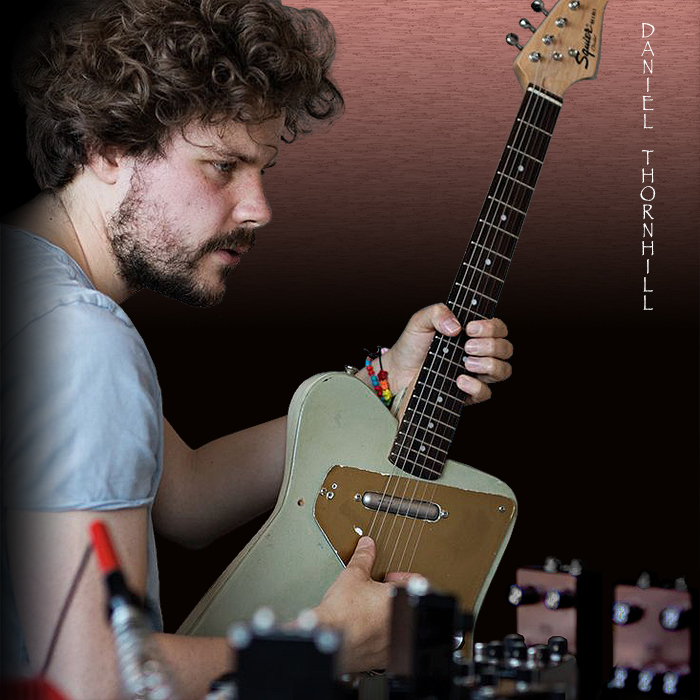
You need but glance at the Fjord Fuzz Instagram Page to see just how prolific Daniel is and has been - particularly with regard to the evolution of the enclosure styling and the evolving use of PCB's alongside some very smart manufacturing decisions along the way.
The pedal which has had the longest evolution and gestation (8 years) is the current Fjord Fuzz all-rounder Embla Fuzz which started off as a two-knob sort of ball-park Fuzz Face-ish style entity yet derived and evolved very significantly from Roland Bee Baa circuit origins. Of course the Embla is very significantly transformed from its Bee Baa starting point, and has gained 2 more knobs along the way alongside a huge degree of reversioning and refinement - if you only ever buy one Fjord Fuzz, then this is likely to be the one.
There are currently just 4 future-classic pedals to Daniel's 2019 Fjord Fuzz range - defined as recently as June of this year. In the range are the aforementioned Embla, official since 2015, also the Odin, originated in that same year too - an evolved take on the Foxx Tone Machine, more recently with dual circuits / dual footswitches - so you can switch between an octave and core unadulterated fuzz voicing. The remaining 2 pedals seem to be fairly recently introduced (this year as far as I can discern) at least officially - the Bifrost psychedelic delay fuzz, which I have an earlier version of, and the Gjallarhorn - a high-gain Super-Fuzz variant.
Along the way Daniel has produced a number of fantastic further fuzzes - including the super high gain Mjølner, Midgard Marshall-in-a-box, the Loke (sort of Embla variant), Fjord-Fuzz Super-Fuzz, Bufo croaky fuzz-drive and Bjørn vintage dark gated fuzz. I am sure we will see some of those others appear again in the not too distant future.
Update! - Daniel has confirmed that the Bjørn and Mjølner will definitely return in the relatively near future, alongside a brand new variety called 'Trym' an essentially expression-pedal-controlled square wave Trem-Fuzz!
Smart Modern Manufacturing Principles
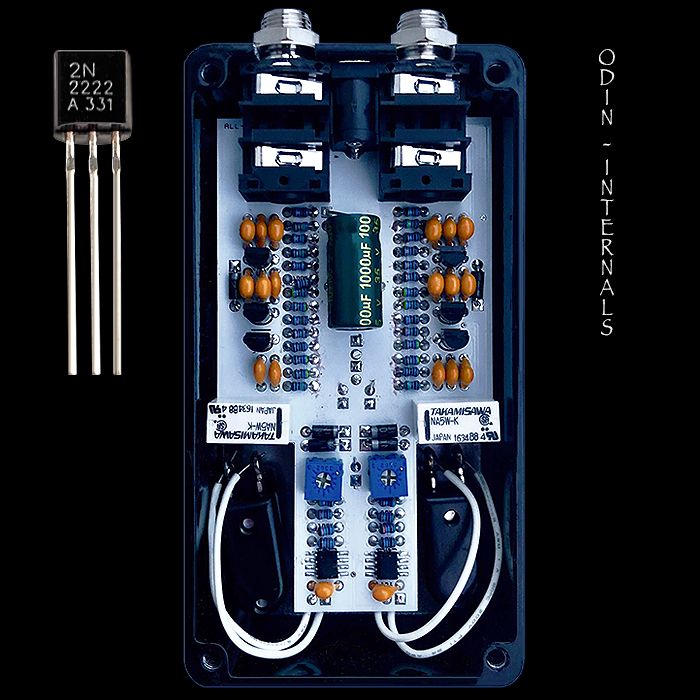
The part of Pedal-building that Daniel enjoys most is the designing and prototyping of the actual fuzz circuits and designing the look and feel of the enclosures. Daniel is not shy to collaborate when he needs to - working with Tom Kogut of TomKat Pedals on PCB designs, and collaborating with Steve Demedash for soft-switching relays and Mammoth Electronics on the enclosures for instance.
Along the way there have been all manner of modern production techniques being employed here in the sourcing of components, as well as the final build. Daniel has innovated truly smart signature laser-engraved semi-translucent copper-topped facia plates which have the pedal symbol and function parameter icons etched/carved into the very surface - and lit up / back-lit by interior LED's. Elements of that have found their way into his neighbour Knut Olai's Pladask Elektrisk pedals - of which I have the latest Fabrikat - which very obviously has a similar facia plate design which Daniel helped out with.
The fact that all those electronics can be accommodated into the smaller 1590B size enclosures - with top-mounted jacks and elegant soft-touch footswitches is nothing short of an engineering marvel - particularly considering the aesthetic functionality of the pedal above and beyond each core fuzz circuit and dual circuits even.
Daniel is the antithesis to those vintage style builders - preferring to utilise more readily available standard modern plastic encased TO-92 style Silicon transistors (2N2222 and 2N5088 for instance) - rather than chasing various metal can unobtanium style NOS components. Once Dan has honed and refined his circuit he wants to be able to build as many of that type as there is demand for and as long as he feels motivated to do such. He's a stickler for quality control, but doesn't feel that he needs to personally assemble everything by hand himself - and if there is a more efficient and consistently sustainable way of doing things - then that's what he's going to make happen.
Dan derives particular pleasure in being able to replicate classic circuits to the highest degrees of fidelity - but using entirely modern, relatively easily sourced and better behaved components - for instance he has developed a fantastic Tone Bender MK I.V circuit using Silicon 2N4123 for Q1 and 2N3704 for Q2 Transistors versus the original's twin Germanium OC75's.
Readers of this blog should know by now my own personal preferences, and this combination of blistering tones, modern looks and compact dimensions is absolutely the kind of thing I gravitate towards.
Discovery

I have been peripherally aware of Fjord Fuzz pedals for a while now - probably a couple of years or so - but as Dan does not have a website yet, and relies almost entirely on Instagram and Reverb.com - my acquaintances with the pedals have been rather fleeting until recently. A big part of my doing this article is that there is currently no long-form material - no proper articles or features on Fjord Fuzz on the Internet, and I had to do a lot of research myself to join up all the dots on this.
Turns out that not too dissimilar to myself, Daniel is the progeny of an English mother and Nordic father - where his family settled in Norway, versus my own roots being in Iceland. There's obviously a notable mix of influences there which no doubt inform Dan's creative impulses. To my ears Dan sounds very English and obviously carries that rock-and-roll legacy to a degree - from his mother's side of the family.
I only properly connected with Fjord Fuzz less than 2 months ago - which probably has much to do with Dan's recent 're-packaging' and refinements of this now official line of 4 pedals. I believe this is the first time there has been an official roster as such - as previously pedals tended to be issued in more sporadic individual micro-batches, very occasionally 2 or 3 varieties together, but never as formalised as the range of 4 is right now.
When I connected properly with Fjord Fuzz there was just a single pedal available anywhere - an early 'Tape Icon' V1 edition of the Bifrost being sold by an English collector on Reverb.com - I of course snapped that up very quickly (pictured above). While now the whole range is available both on Reverb.com and on These Go To 11 - which some of you will be familiar with. Alongside a couple of more local Norwegian retailers which I will detail in Final Thoughts.
For my own purposes I love each of these fuzzes and will most definitely have all eventually - that decision has already been made - probably by mid-September, as I'm already over-extended with obligations for August. I think everyone should have at least an Embla Fuzz, while the Bifrost Lo-Fi Fuzz Delay is a really interesting textured mix and so much fun to play (see my own settings in the above pic), and the Gjallarhorn and Odin are both fantastic takes on two different types of octave-style fuzzes. Pricing right now is circa £170 equivalent for each pedal - which is great value really. These pedals sound every bit as good as they look - and they look amazing, while the tarnishing copper facia is a sort of relicking effect which may be an acquired taste for some - for me it's just the right degree of cool mix between steam-punk and sci-fi!
Bifrost Psychedelic Delay Fuzz - c£170
This pairs one of my all-time favourite all-rounder Silicon transistors - the 2N5088 x 2 (initially associated with Big Muffs, but used very widely for most types of fuzz applications nowadays), with the PT2399 delay chip which has been particularly deployed of late as a more Lo-fi style gritty delay - e.g. by MI Effects. The pedal has 5 controls indicated by icons as usual - Volume | Gain (Delay/Fuzz Mix to a degree) | Feedback | Mix (Rather a randomizing element) | Delay Time. You have dual footswitches - the right-hand one is the On/ByPass, while the left-hand one is for Feedback Overload which cranks the feedback to psychedelic oscillation levels. The current design has its main symbol as a series of ever-decreasing circles - looking something like an electrical hob, while my earlier edition from a batch of 14 has a Cassette Tape symbol instead (per the above demo video actually too) - otherwise the pedals are pretty much identical (on the newer ones the icons are lit up in white - including the (ff) logo! This is a pretty cool and unusual fuzz which I feel many should enjoy - Fuzz + Delay has always been a great combination in any case and I can jam with this pedal for hours on end - you just get a really satisfactory pulsating wall of sound here that is a just such a joy to play along with.
Embla User-Friendly Multi-Fuzz - c£170
This 4-knob significantly deviated Bee Baa circuit derivative is Fjord Fuzz's current all-rounder Flagship fuzz - running Silicon transistors - usually BC549, 2N5088 and 2N5089 - with all the usual modern tricks to allow you to place said pedal anywhere in your signal chain and deploy with ultimate and optimal consistency at all times via those 4 controls - Volume | Gain | Bias | Thickness. The last mentioned is a sort of Bass-cut dial allowing you to to clean up the lower-end frequencies. Inside you have the usual LED brightness trim-pot, you also have the leaf-shaped Internal Bass Module which you can flip around and re-fit 180 degrees to allow for full bass pass-through - in effect disabling the Thickness dial I suppose. This is just a really great all-rounder fuzz with plenty of range on tap on each of those 4 dials. Daniel discovered the circuit when he got to try Øystein Braut's original version of Bee Baa, Øystein's band being of course Electric Eye - where the bass player also makes significant use of Fjord Fuzz pedals. If you're generally considering or thinking about introducing yourself to Fjord Fuzz pedals, then this all-rounder Embla is your most likely starting point.
Gjallarhorn Pure Muscle Octave Fuzz - c£170
This is Fjord Fuzz's evolved collaborative take on the Shin-Ei FY-6 Super-Fuzz working with cult band Motorpsycho, where there was an earlier take on that per the above video simply called the Fjord-Fuzz. In any case a high gain harmonic octave style fuzz utilising 6 silicon transistors - here probably something like 2N5088's which are often used for this genre. You get just 3 controls here - with a large Gain dial, and then 2 smaller Octave Bias and Volume controls. There are no up-to-date demos of this version of the pedal - so I've made use of the earlier Fjord-Fuzz variant which should sound pretty similar.
Odin Dual Function Vintage Fuzztone - c£170
The Odin is Dan's take on the Foxx Tone Machine Octave Fuzz - stripped down to bare essentials, and then separated out into individual octave fuzz and core fuzz circuits. There is just a single control knob here - the large central Volume dial, but then you have dual footswitches - the right-hand one being On/ByPass while the left allows you to switch between the two circuits - Octave Fuzz and Core Fuzz. The Odin's Triangle symbol starts off pink as pictured up top, but changes to blue when Octave is activated. Note that beyond the Green Embla leaf and Yellow Gjallarhorn horn symbol, LED colours are not definitively decided yet - the idea is to have a full rainbow of icons for different pedals - but some of the colourways might change in the future until one permanently 'sticks' to that pedal variant.
Final Thoughts
These fuzz pedals are diametrically opposite to what many fuzz fans seek out - they are sleek and modern in every way, using modern components and techniques - which makes them more consistently reliable and pliable - meaning you can use them anywhere on your pedalboard - and they literally could not be any more compact either. The styling with the tarnished copper facias and back-lit graphics is very unique too - so this should likely appeal to the more modern style of player or journeyman touring musicians who have to have 100% reliability every day and night.
Dan has a pretty universal lifetime warranty on these pedals - unless you have gone out of your way to abuse and destroy them - and providing you can get them to him and include return postage - he will pretty much repair them at any stage within their extended lifecycle. These pedals definitely sound as fantastic as they look, and considering how much thought and detail has gone into them they are actually very reasonably priced.
For my own purposes I'm one down and three to go right at this moment. I really like each and every one of these and have already made plans to acquire the ones I don't already have. I'm a through-and-through fuzz and pedal fan (fanatic some say) - and these are very obviously a breath of fresh air within this genre. There's no one really doing the same sort of stuff as Dan right as of this moment, but I do see certain parallels in his pedal-building approach with another of my favourite brands - Canada's Dr Scientist - both are adventurous and like to break the mould regularly. I also see some parallels with Caroline Guitar Co. in the use of symbols on parameter controls.
There is a significantly long pedigree and provenance to several of these pedals - especially the Embla - which has been 8 years in the making - through dozens of different prototypes, variations and iterations. I thoroughly recommend these and I will have all 4 hopefully long before the end of September! I encourage you to seek these out - they are currently available from the Fjord Fuzz Reverb.com Store and from These Go To 11 as previously mentioned! As well as Norway's Gitarhuset.no - where the Bergen branch (formerly Musik-Magazinet) was instrumental in getting Fjord Fuzz on the map - as the very first retailer of these pedals!



















